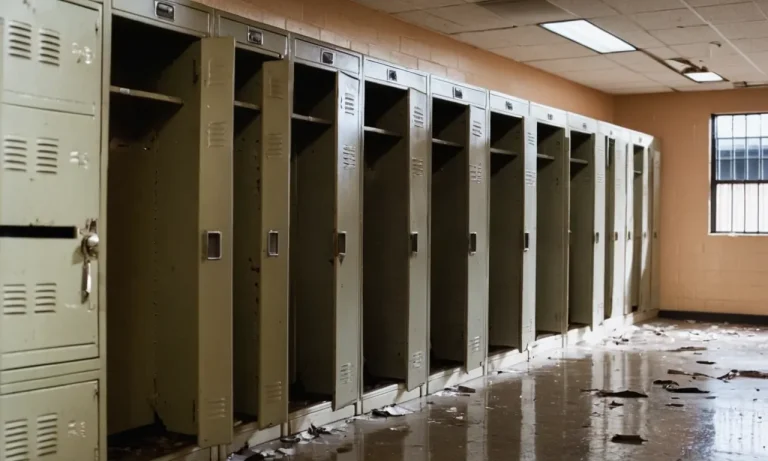Navigating the educational landscape can be a daunting task, especially when it comes to understanding the nuances between different school levels. Middle school and junior high are terms that are often used interchangeably, but they are not entirely the same.
If you’re short on time, here’s a quick answer to your question: Middle school typically refers to grades 6-8, while junior high encompasses grades 7-9. The main difference lies in the grade levels covered and the transition from elementary to high school.
In this comprehensive article, we will delve into the intricacies of middle school and junior high, exploring their distinct characteristics, curriculum, and overall educational approach. Whether you’re a parent, student, or educator, this guide will provide you with a thorough understanding of these crucial educational stages.
Grade Levels and Age Range
When it comes to middle school and junior high, the grade levels and age range of students can vary depending on the region and school district. However, there are some general similarities and differences that are worth exploring.
Middle School Grade Levels
Middle schools typically encompass grades 6 through 8, although some districts may include grade 5 as well. According to the National Center for Education Statistics, in the 2019-2020 school year, there were approximately 15,100 public middle schools in the United States, serving around 8.1 million students.
Middle schools are designed to bridge the gap between elementary and high school, providing a supportive environment for students during their early adolescent years.
Junior High Grade Levels
Junior high schools, on the other hand, typically include grades 7 and 8, and sometimes grade 9. This configuration was more common in the past, but many school districts have transitioned to the middle school model in recent decades.
According to the NCES, in the 2018-2019 school year, there were approximately 2,500 public junior high schools in the United States, serving around 1.4 million students.
Age Range Comparison
The age range of students in middle school and junior high can vary, but generally falls within the following ranges:
- Middle School: Ages 10-14 (Grades 6-8)
- Junior High: Ages 12-15 (Grades 7-9)
It’s important to note that these age ranges are approximate and can differ based on factors such as the student’s birth date and whether they were held back or advanced a grade. Additionally, some middle schools may include grade 5, which would lower the starting age range to around 9 years old.
Regardless of the configuration, both middle schools and junior highs aim to provide a supportive and nurturing environment for students during their transitional years, helping them develop academically, socially, and emotionally.
The key difference lies in the specific grade levels included, which can impact the age range and developmental stages of the students.
Curriculum and Academic Focus
The curriculum and academic focus in middle school and junior high can vary significantly, reflecting the different educational philosophies and approaches adopted by each system. While both aim to prepare students for the transition to high school, the specific subjects, teaching methods, and emphasis on academic rigor can differ.
Middle School Curriculum
Middle schools typically adopt a more holistic and interdisciplinary approach to learning. The curriculum is designed to cater to the unique developmental needs of early adolescents, fostering their intellectual, social, and emotional growth.
Core subjects such as English, mathematics, science, and social studies are taught, but with a greater emphasis on hands-on activities, project-based learning, and real-world applications.
Additionally, middle schools often incorporate exploratory courses or electives that allow students to discover and nurture their interests and talents. These may include art, music, technology, foreign languages, and various extracurricular activities.
According to the National Center for Education Statistics, in the 2019-20 school year, 89% of middle schools offered music instruction, 84% offered visual arts, and 76% offered foreign language courses.
Junior High Curriculum
Junior high schools, on the other hand, tend to have a more traditional and subject-specific curriculum. The focus is primarily on academic subjects, with a stronger emphasis on preparing students for the rigors of high school.
Core subjects like English, mathematics, science, and social studies are taught in a more structured and compartmentalized manner, often with separate classes for each subject.
While junior high schools may offer electives or extracurricular activities, the emphasis is typically on academic achievement and mastery of core subjects. The curriculum is designed to lay a solid foundation for students to succeed in high school and beyond.
Transition to High School Preparation
Both middle schools and junior high schools aim to prepare students for the transition to high school, but their approaches may differ. Middle schools often emphasize developing study skills, time management, and organizational abilities, as well as fostering independence and self-advocacy.
The curriculum is designed to gradually increase in complexity and rigor as students progress through the grades.
In contrast, junior high schools may place a greater emphasis on academic preparedness, ensuring that students have a strong grasp of core subjects and are ready to tackle the more advanced coursework in high school.
They may offer opportunities for students to take advanced or honors classes, preparing them for the rigor of high school-level coursework.
Ultimately, the choice between a middle school or junior high school curriculum depends on the specific needs and learning styles of the students, as well as the educational philosophy and resources of the school district.
Both systems strive to provide a supportive and challenging environment that prepares students for the next phase of their academic journey.
Social and Emotional Development
As students transition from elementary school to middle school or junior high, they undergo significant social and emotional changes. This period is often marked by the onset of adolescence, a time of self-discovery, peer influence, and emotional ups and downs.
Both middle school and junior high environments play a crucial role in shaping a student’s social and emotional development.
Middle School Social Environment
The middle school social environment is a unique and dynamic landscape. Students are exposed to a larger peer group, often coming from multiple elementary schools. This exposure can be both exciting and challenging.
On one hand, it provides opportunities for making new friends and expanding social circles. On the other hand, it can lead to increased peer pressure, bullying, and social anxiety. According to a study by the National Center for Education Statistics, approximately 20% of middle school students reported being bullied at school.
During this time, students begin to form stronger bonds with their peers and may prioritize social acceptance over academic achievement. They become more aware of social hierarchies and may struggle with self-esteem and body image issues.
Middle schools often implement programs and activities to foster a positive social environment, such as peer mentoring, anti-bullying campaigns, and social-emotional learning curricula.
Junior High Social Dynamics
Junior high schools, while similar in many ways to middle schools, may present slightly different social dynamics. Students in junior high are typically a bit older and may have more advanced social skills and emotional maturity.
However, they still face challenges related to peer pressure, bullying, and self-esteem issues. 😔
One notable difference is that junior high students often have more opportunities for extracurricular activities and clubs, which can help them find their niche and develop a sense of belonging. These activities can also promote leadership skills, teamwork, and social connections.
According to a study by the Centers for Disease Control and Prevention, students involved in extracurricular activities are more likely to have higher self-esteem and better academic performance.
Addressing Adolescent Challenges
Both middle schools and junior high schools play a vital role in addressing the social and emotional challenges faced by adolescents. Effective strategies include:
- Providing mental health resources and counseling services
- Implementing social-emotional learning programs
- Promoting positive school climate and anti-bullying initiatives
- Encouraging extracurricular activities and clubs
- Offering peer mentoring and support groups
By addressing these challenges head-on, schools can help students navigate this critical period of social and emotional development, fostering resilience, self-confidence, and healthy relationships. 👏
Remember, every student’s experience is unique, and it’s essential to approach their social and emotional needs with empathy, understanding, and a willingness to provide support. With the right strategies in place, both middle schools and junior high schools can create an environment that nurtures students’ social and emotional well-being, setting them up for success in their academic and personal lives.
🎉
Extracurricular Activities and Opportunities
Beyond the core academic subjects, middle schools and junior highs offer a wide array of extracurricular activities and opportunities for students to explore their interests and develop new talents. These activities play a crucial role in shaping well-rounded individuals and fostering personal growth.
Middle School Extracurriculars
Middle schools typically offer a diverse range of extracurricular activities, catering to various interests and abilities. Here are some common options:
- Sports teams (e.g., basketball, soccer, volleyball, track and field)
- Arts and cultural clubs (e.g., drama, music, art, dance)
- Academic clubs (e.g., science, math, robotics, debate)
- Leadership and service organizations (e.g., student council, community service clubs)
- Interest-based clubs (e.g., chess, coding, cooking, gardening)
According to a report by the National Center for Education Statistics, over 80% of middle schools offer extracurricular activities, with sports being the most popular option. These activities not only provide opportunities for students to explore their passions but also foster teamwork, leadership, and time management skills.
Junior High Extracurriculars
Junior high schools often have a similar range of extracurricular activities as middle schools, but with some variations. Here are some common options:
- Sports teams (e.g., football, basketball, baseball/softball, track and field)
- Fine arts programs (e.g., band, choir, theater, visual arts)
- Academic clubs (e.g., science, math, robotics, debate)
- Student organizations (e.g., student council, honor societies)
- Interest-based clubs (e.g., chess, coding, gaming, photography)
According to a survey by the National Center for Education Statistics, over 90% of junior high schools offer extracurricular activities, with sports and fine arts programs being the most popular options.
These activities provide students with opportunities to develop their talents, explore new interests, and build valuable skills.
Exploring Interests and Talents
Both middle schools and junior highs recognize the importance of extracurricular activities in helping students discover and nurture their interests and talents. These activities not only provide an outlet for creative expression and physical activity but also serve as a platform for personal growth and character development.
Participating in extracurricular activities can help students build confidence, learn time management skills, and develop teamwork and leadership abilities – all valuable assets for their future academic and professional endeavors.
Furthermore, extracurricular involvement can also enhance students’ college applications and resumes, showcasing their dedication, passion, and well-roundedness. According to CollegeBoard, admissions officers often consider extracurricular activities as a key factor in evaluating applicants, as they provide insights into students’ interests, commitments, and potential for success beyond the classroom.
😊
Conclusion
Understanding the difference between middle school and junior high is crucial for parents, students, and educators alike. While they share similarities in terms of addressing the unique needs of adolescents, the grade levels covered and the transition to high school set them apart.
By exploring the grade levels, curriculum, social dynamics, and extracurricular opportunities, this comprehensive guide has provided a thorough overview of these two educational stages. Whether you’re navigating the transition from elementary school or preparing for the next step towards high school, being informed about the distinctions between middle school and junior high can help ensure a smooth and successful academic journey.
Ultimately, both middle school and junior high play a pivotal role in shaping the academic, social, and emotional development of students during their formative years. Embracing the unique characteristics of each stage can empower students to thrive and lay a strong foundation for their future endeavors.






